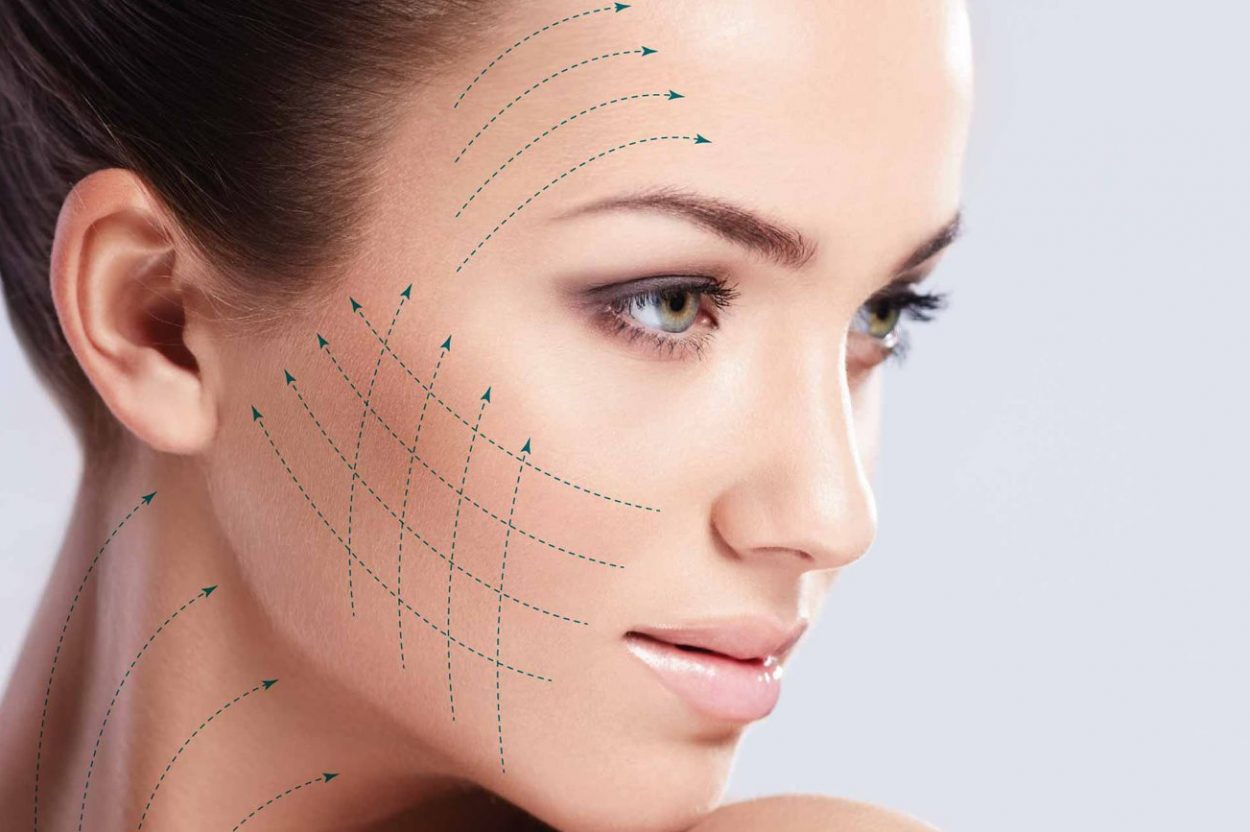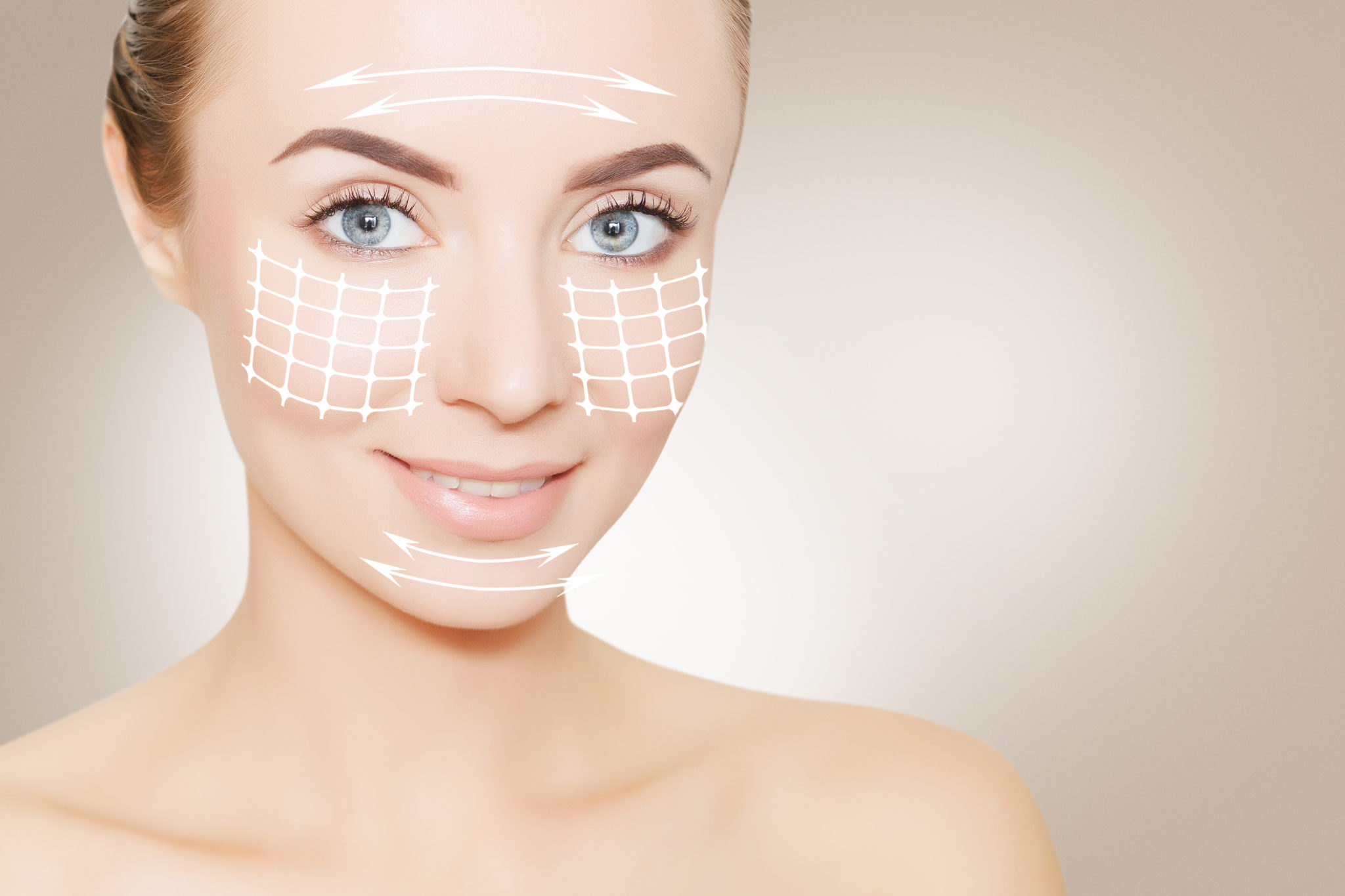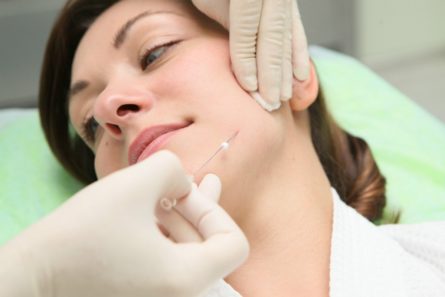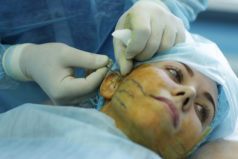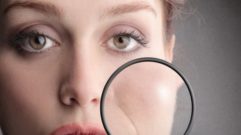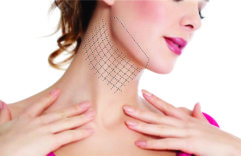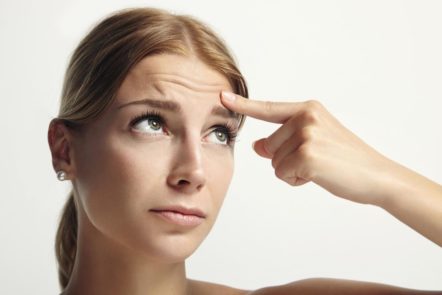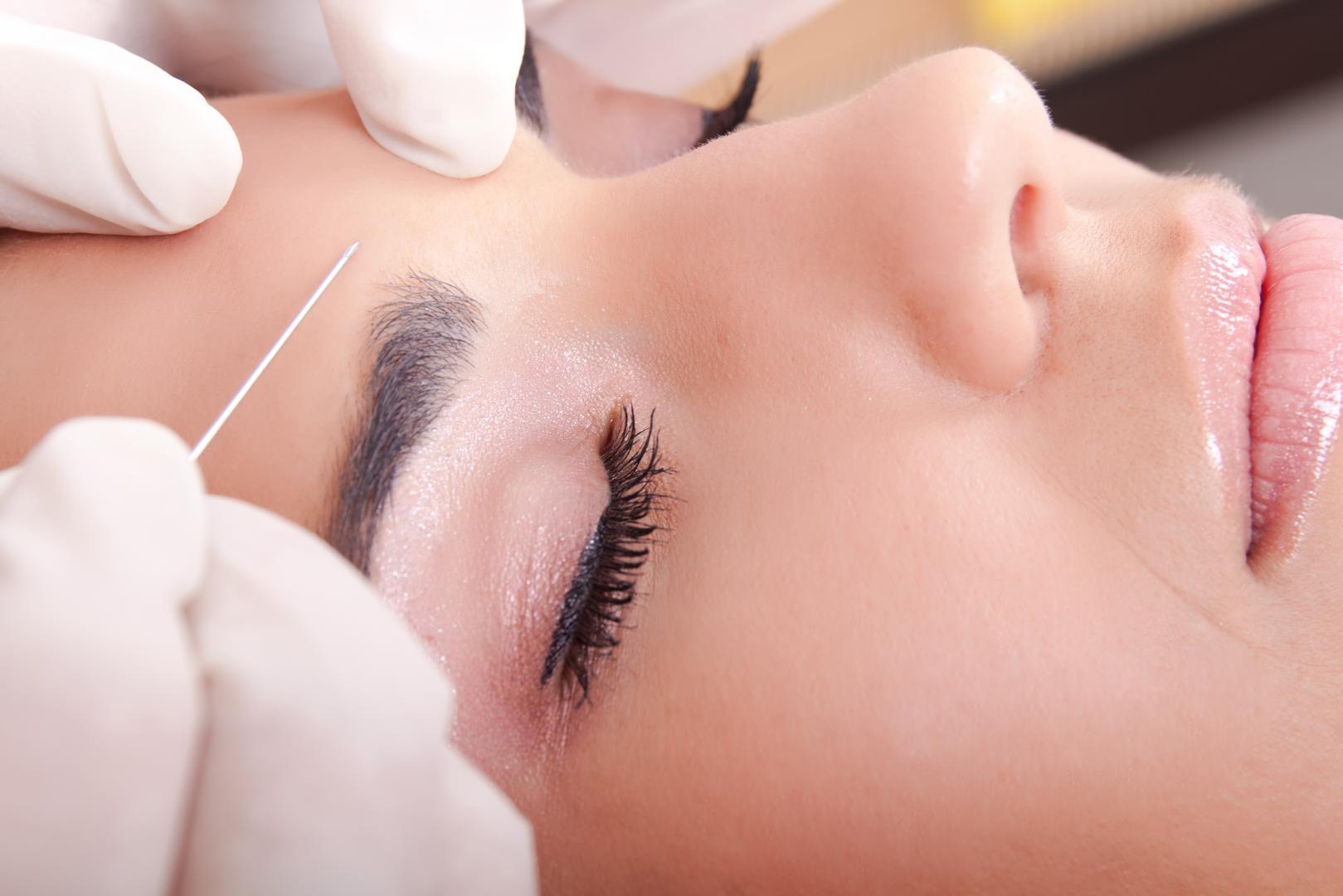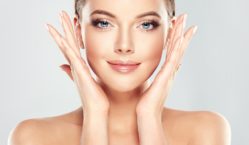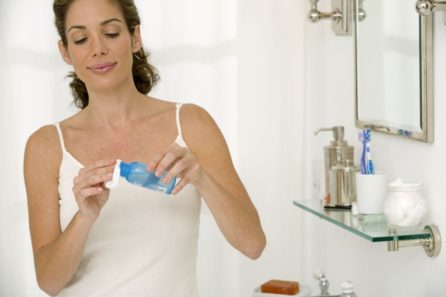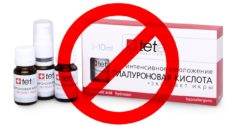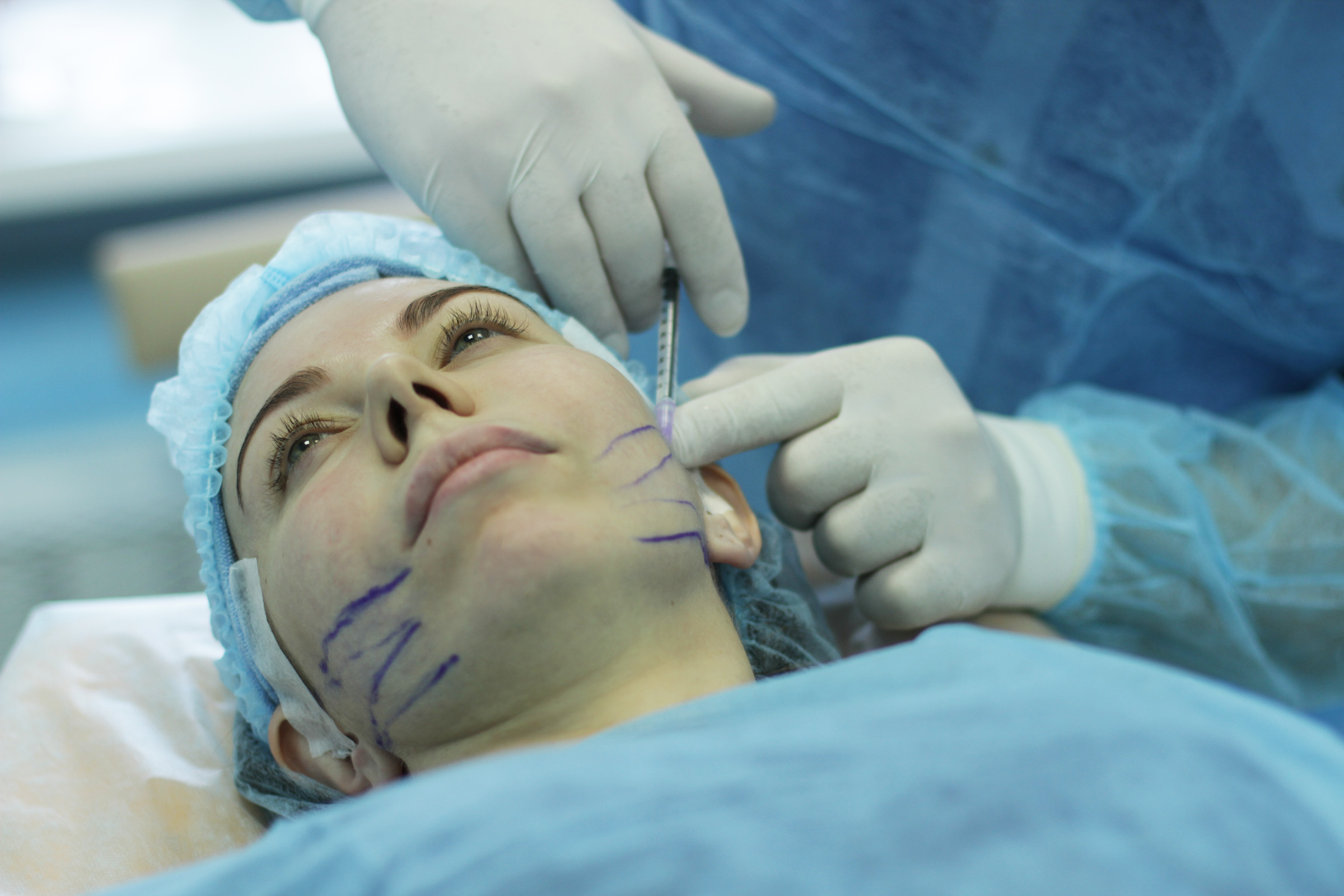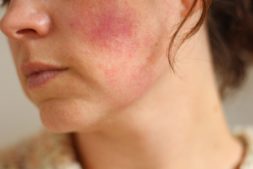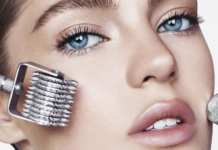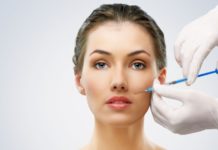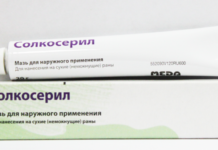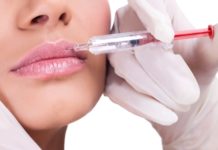The desire to be young and beautiful is characteristic of almost every woman. To stop the action of inexorable time and improve the appearance of the face will help the latest development in cosmetology - mesothreads. What are they and how are they installed?
Material Content:
What is mezzanine
Face-lift mesothreads are specially processed fibers. They are introduced into the epidermis to increase the elasticity and tightness of the latter. The system also helps maintain facial contours and prevents sagging skin in the cheeks and nasolabial folds.
Note! For the first time mesothreads were used in the countries of Southeast Asia, famous for inventing the most diverse methods of rejuvenation.
The implantation of mesothreads is recognized as one of the leading modern methods of rejuvenation.
This procedure is considered complex and combines the principles of 4 anti-aging techniques:
- Botox injections
- oxygen exposure;
- filling of intercellular voids.
- laser lift;
Absorbable threads called 3d mesothreads are made of polydioxanone, a special synthetic substance. It is recognized as the safest for humans in view of its biological compatibility. Threads introduced under the skin form a strong frame that maintains the natural shape of the face. In addition, the procedure helps to enhance the production of natural collagen. After a certain period of time, the threads dissolve and are completely eliminated from the body.
Advantages and disadvantages of technology
Among the basic advantages of using mesothreads are the following:
- The duration of the implantation process. All actions of a specialist take no more than 30 minutes.
- Painless or slightly painful procedure. It all depends on the characteristics of the skin of the client. In general, the placement of the threads does not cause much discomfort and does not require long healing.
- Noticeable results. Considering that blood circulation improves in the places of implantation of threads, the appearance of the skin almost immediately changes for the better.
- Hypoallergenicity. The materials used do not reject the body and do not cause allergies.
- It is permissible to combine threadlifting with additional procedures (peeling, Botox injections, mesotherapy, etc.).
Additional bonuses of threadlifting by mezzanines include:
- Lack of scars, scars. Unlike plastic surgery, mesothreading does not leave aggressive traces on the treated integument.
- Preservation of naturalness. After implantation of the threads, the face does not seem strained or unnatural. The procedure only emphasizes the natural beauty of the client.
- No impact on facial expressions. Unlike Botox, mesothreads fixed in facial tissues do not alter facial expressions.
- Availability. The price of threadlifting is significantly inferior to the prices fixed in the price lists of plastic surgeons.
However, some disadvantages, including:
- risk of hematomas;
- possible formation of tubercles in the areas of introduction of threads;
- periodically occurring discomfort and pain for several days after implantation.
In order to prevent the occurrence of such unpleasant symptoms, you should carefully choose the wizard to install the threads and take into account all the contraindications available to the procedure.
Varieties of threadlifting
Absolutely all mesothreads used in the process of thread lifting are made of polydioxanone and are additionally coated with a layer of lactic acid. They can differ in the structure and manner of fixation.
According to these criteria, the threads are divided into the following subspecies:
- Linear (smooth). The simplest warp threads with ease of installation. The procedure carried out with their help is notable for minimal discomfort. The average length of the thread is 25-90 mm. Their location scheme is built individually for each client. This takes into account the degree of depth of wrinkles and skin thickness, as well as the presence of age-related changes.
- Spiral. Named so due to its original spiral shape. They have the ability to stretch during healing and contraction after installation. Their length is 50-60 mm. Spiral threads can be combined with linear or installed separately from them.
- Needle with notches. They are used for implantation in especially difficult places and provide a tangible lifting effect. Serifs are located along the entire length of the thread, "looking" in different directions. Such threads help to accurately form the front frame. The number of required threads is determined by the doctor, most often from 3 to 10 units are required. The introduction of such threads is considered quite painful, and therefore passes under local anesthesia.
- Pigtails. Twisted or braided threads create a powerful tightening effect.
- Mezoniti Aptos. They are considered the most resistant, in comparison with other types of threads, since they do not resolve for a longer time - about 5 years. They are used not only for facelift, but also for the correction of body lines.
- Liquid mesothreads. They are not threads in the direct sense of the word. Instead, a gel consisting of zinc chloride and hyaluronic acid is injected into the subcutaneous space of the client. Often the gel is used in the area of the cheeks and chin at the rate of 1 ml per 1 area, as well as when lifting the abdomen, buttocks and décolleté (3 ml per zone). Liquid threads are not suitable for manipulations in the area around the eyes, on the neck and forehead.
Note! An experienced specialist, at the first inspection, can determine the amount necessary for tightening with threads. So for a thoroughly weakened oval of the face 20 units are required, for the eyebrow zone - 10. To correct the line of the chin, removing a fold of fat from this zone, you can use 15 threads.
Indications for use
The main indications for the use of mesothreads are:
- deep wrinkles and creases on the face;
- folds in the area behind the auricle and in front of it;
- wrinkles around the eyes and lips, vertical wrinkles on the forehead;
- sagging cheeks, chin, eyebrows;
- folds in the neck and decollete;
- sagging skin on arms, stomach and hips.
Also, threadlifting helps to smooth out irregularities in the skin relief after the liposuction procedure.
Description of procedure
Using the thinnest needles with a diameter of not more than 0.1 mm, the threads are implanted in the epidermis. Due to their high elasticity, they have a peculiar spring effect. Each unit is arranged in a specific order. Combining with each other, the threads create a kind of frame, harmoniously implanting in the tissues of the face and body. So-called biodegradable threads are subject to gradual decay. As a result, water and carbon dioxide are formed at the sites of implantation of units.
Even after the final resorption after 6-8 months after installation, a certain compacted framework of connective tissue remains in the skin. It supports the skin for another 1.5-2 years. After the specified time, a repeated thread lifting procedure should be carried out.
Note! Modern contour plastic widely uses the use of cannulas in the process of installing threads. They are thinner and more flexible needles. Their main difference from simple needles are the tips: at the cannulas they are not sharp, but blunt with a small hole on one edge.
Skin Care After Facelift
There is practically no rehabilitation period after lifting with mesothreads: the patient can almost immediately return to his usual lifestyle. For complete healing of the implant 1-2 weeks are enough. At this time, the client may notice some tingling and discomfort in the implantation zone, which disappear after 2-3 days.
So that the recovery period does not become too long, it is recommended to adhere to the following care rules:
- In the first hours after lifting, you should not smoke.
- The first three days after lifting, you can not visit the sauna, pool, bath, solarium.
- During the day after implantation, do not use decorative cosmetics.
- Do not touch the face: it is forbidden to massage, cool or warm it for 12-24 hours.
- In order to avoid thread displacement during the week after installation, it is recommended to laugh at a minimum, strain your facial expressions in every possible way, and also avoid heavy physical exercises.
- The first month after implantation, drink less coffee and alcohol, spicy and salty foods.
- It should not be exposed to the sun for 25-30 days after manipulation. During the same time, face massage and mechanical peeling should be avoided.
Further skin care after tightening is as follows:
- The first day after the procedure should be washed with an antibacterial agent, in the future, use only purified water for this purpose, as well as agents with active oxygen in the composition.
- Care cosmetics must be of high quality and protect the skin from ultraviolet rays.
- The use of hyaluronic acid-based products should be postponed for the next six months.
Important! Laser resurfacing facilitates resorption of mesothreads. For this reason, this procedure should be discarded at least in the first six months after lifting with threads.
Possible complications
The thread lifting procedure can provoke a number of complications and side effects, including:
- The formation of bruises and swelling. It is associated with microtrauma of blood vessels and capillaries caused by the action of filaments.Such a side effect is recognized as normal and resolves on its own after 2-3 days, a maximum after 7. If hematomas and edema persist longer or increase in size is noted, you should definitely visit a cosmetologist.
- The appearance of bumps, bumps. May result from incomplete tension or straightening of the threads after they have been separated from the needle. This defect is very difficult to eliminate, almost impossible: it is necessary to wait for the complete resorption of materials.
- "Translucent" threads through the skin. Occurs when the material is introduced very superficially. Also, such an effect is possible in people with excessively fair and thin skin (in such patients, the procedure for trend lifting is not recommended in principle).
- The "accordion" effect. Just like bumps and bumps are formed after separating the needle from the thread and practically cannot be corrected.
- Asymmetry of the face. It may be the result of a combination of two factors - the surface tension of the thread and the formation of the "accordion".
- Allergic reactions. Occur rarely, directly depend on the individual characteristics of the patient's body.
In some cases (however, not too often), the client can “get” skin infection in addition to lifting. It can be accompanied by suppuration, and sometimes even the development of an abscess. Typically, this situation is the result of a violation of thread hygiene or the cabinet in which the lift is performed.
Contraindications
The main contraindications that impede the trend lifting include:
- infectious diseases (acute respiratory viral infections, flu, etc.);
- inflammatory processes of the skin;
- oncological diseases;
- bleeding disorders;
- menstruation;
- diabetes;
- diseases in acute and chronic forms.
The installation of threads during pregnancy and lactation is not recommended.
Evaluation of effectiveness: before and after
Treadlifting is recommended for patients whose age-related skin changes are not yet pronounced. The result is a clearer contour of the oval of the face, a pronounced visual reduction in wrinkles and folds, as well as a general improvement in the condition of the skin of the face. Provided that the procedure is carried out by a qualified master, the result before and after the treadlift is obvious: patients are younger by at least 10 years.
Treadlifting is a modern cosmetology procedure aimed at eliminating the first signs of skin aging and improving the appearance of the client. With a relatively small number of contraindications, this method has several obvious advantages. The main one is the ability to look young and well-groomed without the intervention of a plastic surgeon's scalpel.


